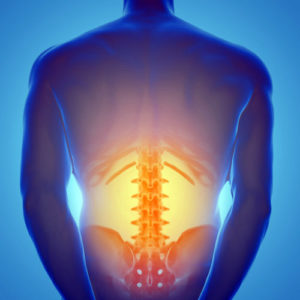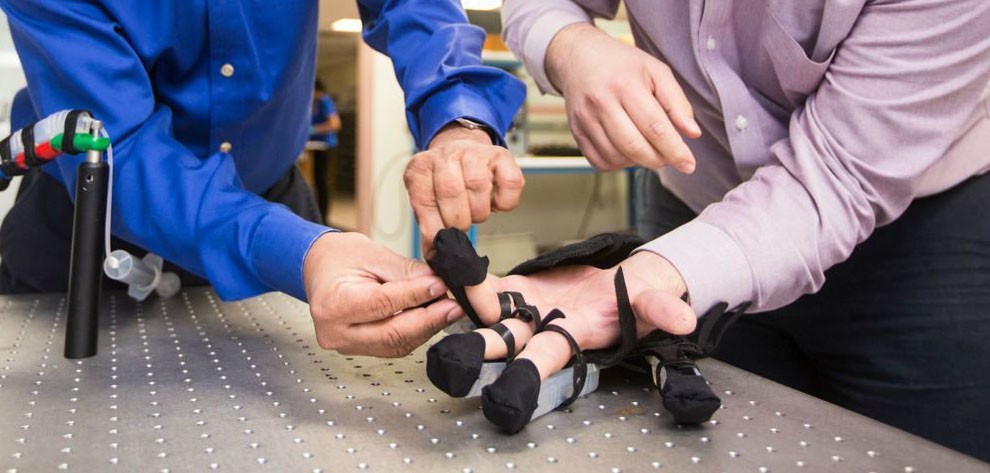![]() Every week, we do a little research of our own. We’re looking for scientists, professors, engineers, entrepreneurs—anybody, really—engaging in research and development across North Texas.
Every week, we do a little research of our own. We’re looking for scientists, professors, engineers, entrepreneurs—anybody, really—engaging in research and development across North Texas.
There’s plenty of good work being done. If you want to put R&D under your microscope, sign up for our e-newsletter.
Neuro Rehab VR, UNTHSC, and UTA team up on robotic VR gloves for a stroke patient’s rehab
Fort Worth startup Neuro Rehab VR, the University of North Texas Health Science Center in Fort Worth, and the University of Texas at Arlington Research Institute are teaming up to make flexible, soft robotic gloves that will use virtual reality gaming to help in rehabilitating stroke patients.
![Veena Somareddy, Neuro Rehab VR [Photo: Skyler Fike]](https://s24806.pcdn.co/wp-content/uploads/2019/02/VeenaSomareddy_970-300x144.jpg)
Veena Somareddy of Neuro Rehab VR [Photo: Skyler Fike]
The team was recently awarded a $224,893 National Science Foundation grant to use robotic-assisted, virtual reality-based therapy for stroke patients. The grant, part of the NSF’s Small Business Technology Transfer Fund, is aimed at helping tech startups to commercialize their products.
The patients will use the glove, along with VR gaming to be developed by Neuro Rehab VR, to engage in rehabilitation activities intended to help regain hand function.
Principal investigator Veena Somareddy, chief technology officer and president of Neuro Rehab VR, will lead the development of the 3D virtual reality gaming environment. The UTARI team, led by co-principal investigator Muthu Wijesundara, will provide the soft robotic gloves. After the system is developed, the UNT Health Science Center will perform clinical testing of the device with post-stroke patients.
“The immersive experience provided by the system will encourage patients to participate in rehabilitation activities. This has the potential to increase patient compliance, which is a huge problem in current rehabilitation approaches,” Somareddy said in a statement. “As robot-assisted treatment becomes widely available and accepted, the customer base will grow from acute care clinics to long-term rehabilitation centers and finally to home-based care. This robot-assisted rehabilitation market is expected to grow dramatically, reaching $2 billion by 2020 and we believe our system has a strong niche market opportunity.”
UT Dallas is part of team examining the roots of chronic pain
Chronic pain affects millions of Americans, but a new study has garnered evidence of its source and revealed several new targets for pain treatment.
The study was conducted by researchers at The University of Texas at Dallas, UT MD Anderson Cancer Center, UT Health Science Center at Houston, and Baylor College of Medicine. According to a release from UTD, a paper recently published in Brain, one of the world’s oldest neurology journals, looked at specialized nerve cells clustered near the base of the spine.

[Image: Courtesy UT Dallas]
The researchers got a very rare opportunity to study these nerves, dorsal root ganglia (DRG), that had been removed from cancer patients undergoing surgery at MD Anderson.
UTD said that the researchers cataloged variations in RNA expression in the DRG cells of patients, who differed depending on pain state and sex. Using RNA sequencing on the DRG cells yielded a list of promising biochemical pathways that researchers might be able to devise analgesic drugs for.
“This surgery is not done at many places,” said Ted Price, a co-author of the paper and Eugene McDermott Professor of Neuroscience in UTD’s School of Behavioral and Brain Sciences. “Our patient cohort of 21, though it doesn’t sound like many, is huge relative to any prior human chronic pain study using RNA sequencing.”
Caris Life Sciences finds a possible anti-tumor drug target
Irving-based molecular science innovator Caris Life Sciences has announced new data that might be a novel pathway to treating Non-Hodgkins lymphoma.
The findings, published in Cell Chemical Biology, show for the first time the identification of a spliceosomal complex on the surface of cancer cells, which show potential as a unique anti-tumor drug target.
The complex was discovered using an NHL-specific single-stranded DNA aptamer, C10.36. The aptamer was discovered by Caris Life Sciences collaborators Günter Mayer and Michael Famulok at the Life & Medical Sciences Institute at University of Bonn. Target identification was performed using Caris’ proprietary ADAPT Biotargeting System.
Caris said the results show that when the C10.36 aptamer binds to its target on the cell surface, the complex is translocated into the cell, causing global changes in RNA splicing and necrotic cell death.
An aptamer is a short, single-stranded DNA or RNA molecule that can bind selectively to targets, including proteins, peptides, carbohydrates, small molecules, toxins, and live cells.
According to Caris, this is the first time a spliceosomal complex has been identified on the cell surface.
READ NEXT
Discovery: UTA Prof Gets $6.575M in Grants; UNT, University of Dallas Put Telescope Online
![]()
Get on the list.
Dallas Innovates, every day.
Sign up to keep your eye on what’s new and next in Dallas-Fort Worth, every day.

































































